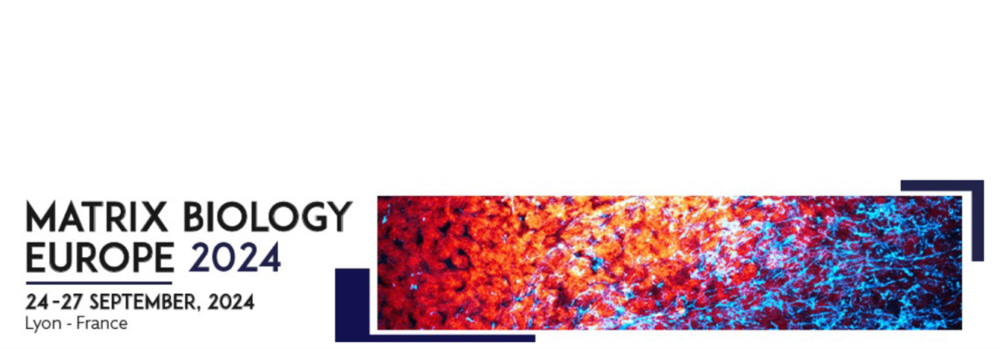A two-year postdoctoral position is opening at the Institute of Materials (iMat) of the University Paris-Seine (Cergy-Pontoise). The project includes two labs of iMat: LPPI (Polymer chemistry) and ERRMECe (Biology)
Context
In vivo, cells are surrounded by the extracellular matrix (ECM), a 3D-meshwork of macromolecules. A great variety of dynamic biochemical, biophysical, topographical and electrical clues emanates from ECM. They govern cell survival, differentiation and others behaviors, and subsequently physiopathological processes. Especially, the microenvironment modulates cell phenotype and could subsequently orient cells’ response to drug agents and targeted therapies[1]. To take into account this native 3D-environment in cell-based assays, various supports have been developed. They are classified as scaffold-free (like spheroids) or scaffold-based supports (hydrogels, porous/fibrous scaffold) and are made respectively from natural ECM-derived molecules or synthetic material[2]. Among common synthetic commercial scaffolds, there are microfabricated scaffolds and the widely described electrospun fiber mats. Poly(High Internal Phase Emulsion) (polyHIPEs) presenting interconnected porous structures, have been described also as really promising 3D templates [3,4] but are, up to now, only available at laboratory scale.
Despite their advantages in terms of robustness, reproducibility and tunability in comparison to natural ECM-derived materials, these synthetic scaffolds rarely incorporate ECM molecules, thus losing the “biochemical component” of cell microenvironment. Moreover, such scaffolds display limited and uncontrolled dynamic and often lack the combined regulatory inputs as porosity, elasticity, topography, or electrical clues from the ECM that all contribute to modulating cell survival and functions[5]. In this context, the emergence of electroactive materials is of critical interest to mimic the environment of demanding cells regarding mechanical, morphological or electrical stimulation. Such materials represent a fast growing field and rely on the coatings of 3D porous structures with conducting materials. For instance, graphene coating on silk fibroin fiber mats, providing electrical conduction, improved the differentiation of PC-12 cells into neural phenotypes[6]. Coating with a conducting polymer (polyaniline) on similar scaffolds allowed electrical stimulation and enhanced differentiation of myogenic (muscle) C2C12 cells[7]. In addition to simple electrical conduction, conducting polymers (CPs), as electroactive polymers, can also provide additional functions rarely described in this field. Indeed, they are also able to change shape/volume and/or mechanical properties when electrochemically oxidized or reduced. Actually, when CPs are stimulated using low potentials (~ 1V), exchanges (insertion/expulsion) of counter-ions with surrounding electrolyte takes place, leading to electrochemically controllable volume changes[8] thus, allowing both electrical and mechanical stimulations.
LPPI has described the first rubbery electroactive electrospun scaffolds based on elastomer (Nitrile Butadiene Rubber) and polyethylene oxide (PEO) functionalized by a conducting polymer (poly(3,4- ethylenedioxythiophene) (PEDOT)[9,10]. Not evaluated yet as electroactive cell culture scaffolds, they presented promising actuation and beating functionalities in the presence of phosphate buffered saline (PBS). Preliminary data suggest their cytocompatibility. More recently conducting polymer coating has been used by Jager et al. to provide mechanical beating functionality to poly(lactic-co- glycolic acid) (PLGA) electrospun fibers and resulted in increased expression of cardiac markers of stem cells[11]. Nevertheless this unique example of mechanically active culture scaffolds displayed limited volume variations due to the high stiffness of PLGA fibers, highlighting the need of soft and rubbery 3D templates for efficient electroactive behavior. It is worth mentioning that polyHIPEs have never been functionalized by any electroactive material contrary to electrospun fiber mats.
Project
In the frame of 3DEStim, we propose:
- To develop 3D electroactive scaffolds for cell culture combining both electrical and mechanical stimulation. Such materials will be elaborated first from highly porous polyHIPE structures. A conducting polymer will be embedded into this matrix by oxidative chemical vapor phase polymerization of corresponding monomer.
- To functionalize these scaffolds with adhesive ECM glycoproteins for displaying controlled properties and signal dynamic of in vivo cell environments. The cells responses to such ECM- containing scaffolds will be then studied.
- To establish the proof of the concept of using such a device for drug response screening, firstly focusing on anticancer drug response, especially of ovarian cancer metastasis by tuning the scaffold to model their peritoneum implantation site, which displays in vivo dynamic resulting from breathing, digestion, and bodily movements.
Thereafter, capitalizing on the acquired know-how, the 3D electoactive scaffold features as well as its ECM functionalization will be adapted to varied cell types in regard with the desired drug assays
Candidate Profile
Education
- PhD in Polymer Chemistry or biomaterials
Competencies
- Relevant research experience and demonstrated competencies in polymer and material
synthesis. Experience in biomaterials and cell culture would be an asset - Track record of researcher dissemination including peer-reviewed publications
- Ready to work according to best chemical or biology laboratory practices including lab safety.
- Excellent project management, analytical, and report writing skills.
- Excellent communication skills (oral, written, presentation).
- Demonstrated ability to generate new ideas, concepts, models and solutions.
- Collaborative skills, initiative, result oriented, organization, and capacity to work in an
interdisciplinary environment.
Language
- French and/or English
Requirement
- less than 6 months in France since the last 3 years.
Contacts
Cedric.plesse@u-cergy.fr
Cedric.vancaeyzeele@u-cergy.fr
Johanne.leroy-dudal@u-cergy.fr
[2] Knight at al. J Anat. (2015), 227(6): 746–756.
[3] Moglia R.S. et al. Biomacromolecules (2014), 15, 2870−2878.
[4] McGann C.L. et al. Polymer (2017), 126, 408-418
[5] Kofron et al. J Physiol (2017), 595(12), 3891-3905.
[6] Aznar-Cervantes et al. Materials Science and Engineering: C (2017), 79, 315-325
[7] Zhang et al. Macromolecular Bioscience (2017) 17(9), 1700147
[8] Otero et al. J. Mater. Chem. B, 2016, 4, 2069–2085
[9] Kerr-Phillips et al. J. Mater. Chem. B, 2015,3, 4249-4258
[10] Kerr-Phillips et al. Biosensors and Bioelectronics, 2018, 100, 549-555, ISSN 0956-5663
[11] Gelmi et al. Adv. Healthcare Mater.2016, 5, 1471–1480
